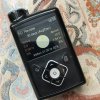- Relationship to Diabetes
- Type 1
- Pronouns
- He/Him
I've been meaning to post this for ages, but kept forgetting!
At the ADA this year the international consensus paper on TIR (time in range) was published by a panel of experts with a huge amount of knowledge and expertise in supporting people to use continuous data to help manage their diabetes.
Different targets are suggested for general T1/T2 users, and those who are pregnant or who may be older or infirm.
Hope people find this helpful and that it gives folks something to aim for. Particularly useful to recognise that you have have a reasonable chunk of readings about 10mmol/L and still get a great HbA1c. Conversely, if you are getting 80% in range, but 10% of the other results are hypos, it shows there's still work to be done.
I've tried to attach a graph that shows a summary of the suggested targets. Or you can read the full paper here: https://care.diabetesjournals.org/content/early/2019/06/07/dci19-0028

At the ADA this year the international consensus paper on TIR (time in range) was published by a panel of experts with a huge amount of knowledge and expertise in supporting people to use continuous data to help manage their diabetes.
Different targets are suggested for general T1/T2 users, and those who are pregnant or who may be older or infirm.
Hope people find this helpful and that it gives folks something to aim for. Particularly useful to recognise that you have have a reasonable chunk of readings about 10mmol/L and still get a great HbA1c. Conversely, if you are getting 80% in range, but 10% of the other results are hypos, it shows there's still work to be done.
I've tried to attach a graph that shows a summary of the suggested targets. Or you can read the full paper here: https://care.diabetesjournals.org/content/early/2019/06/07/dci19-0028

Last edited:

